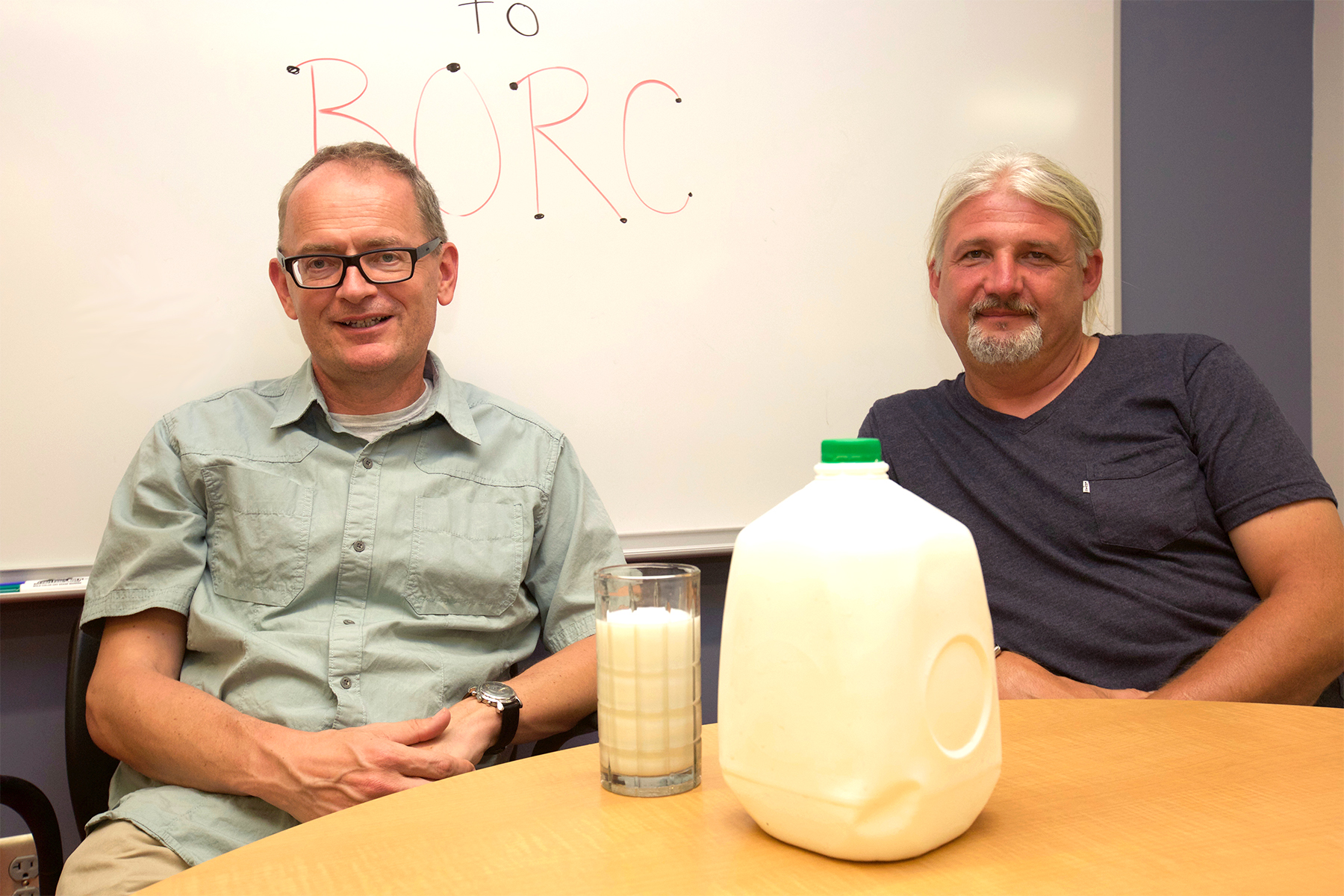NPOD Team earns $1.7M grant to study milk-conveyed molecules
12 Jul 2016

University of Nebraska-Lincoln researchers have received a $1.7 million grant from the U.S. Department of Agriculture to help chronicle the fantastic voyage that gene-regulating molecules make from cow's milk to the human body.
Funded by the USDA's National Institute of Food and Agriculture, the researchers will refine a toolkit for quantifying and differentiating microRNAs — crucial bits of ribonucleic acid that silence certain genes to keep cells from overproducing proteins. The efforts could eventually improve the accuracy, lower the cost and speed the process of screening for cancers and other diseases.
For the better part of two decades, researchers generally assumed that microRNAs remain cooped up in the organisms that originally produce them. But several years ago, UNL researcher Janos Zempleni and his colleagues reported evidence that microRNAs can also migrate from cows to humans — and mothers to infants — by hitching a ride in milk.
That finding will inform one focus of the new grant: using a customized version of a common analytic technique, the assay, to determine just how well milk transfers microRNAs to the human body.
"Nobody even considered the possibility that microRNAs could be obtained from foods," said Zempleni, a Willa Cather Professor of nutrition and health sciences. "I think that is the novel part and what is intriguing to the biomedical research community. All of a sudden, you have this additional source of microRNAs in body fluids. We showed that these microRNAs are not only absorbed, but that cow microRNAs go to human tissues and cells, where they regulate human genes."
Yet recent research also suggests that irregular levels of certain microRNAs in the bloodstream might be triggered by, and could signal the onset of, diseases that include cancer. This could make microRNAs a critical telltale in blood-based biopsies that help spot cancers before other symptoms arise — and do so less intrusively than conventional, tissue-based biopsies.
It also means that recognizing patterns of cancer-related microRNAs may rely on distinguishing between their internal and food-derived forms. Without that ability, Zempleni said, microRNA-based biopsies could lead to false positives or false negatives. Consequently, Zempleni's team is also refining its assay to distinguish between nucleotide sequences of human- and cow-produced microRNAs in human plasma.
"This isn't as easy as one would think," Zempleni said. "The reason is that cow and human microRNAs, for the most part, have identical nucleotide sequences. Fortunately, there are maybe a dozen microRNAs for which the sequences are slightly different. These are the ones we're focusing on."
Along with directly measuring microRNAs and exosomes, the protective vehicles that transport microRNAs throughout the body, the team will also investigate how other physiological markers are affected by an uptick or downturn in microRNAs. These markers include purines, fundamental components of DNA that the researchers previously found were degraded faster in mice and people who consumed microRNA-deficient diets.
More broadly, Zempleni said the new project represents another step toward understanding how imported microRNAs might influence gene regulation and metabolism in ways similar to their domestic counterparts.
"We're interested in exploring how these really small levels of microRNAs — we're talking really, really tiny traces — can elicit these big changes," Zempleni said. “Everybody in the field has that same question, 'How can they do what they do?' That's what we're looking for."
Zempleni earned the grant with Jiri Adamec, associate professor of biochemistry, and Juan Cui, assistant professor of computer science and engineering. All three researchers are part of the Nebraska Center for the Prevention of Obesity Diseases, which was launched in 2014 with $11.3 million in support from the National Institutes of Health. 
Juan Cui
Nebraska Center for the Prevention of Obesity Diseases